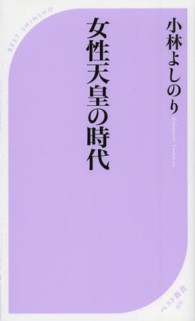Description
Physics and Technology of Crystalline Oxide Semiconductor CAAC-IGZO: Application to Displays
This book highlights the display applications of c-axis aligned crystalline indium–gallium–zinc oxide (CAAC-IGZO), a new class of oxide material that challenges the dominance of silicon in the field of thin film semiconductor devices. It is an enabler for displays with high resolution and low power consumption, as well as high-productivity manufacturing.
The applications of CAAC-IGZO focus on liquid crystal displays (LCDs) with extremely low power consumption for mobile applications, and high-resolution and flexible organic light-emitting diode (OLED) displays, and present a large number of prototypes developed at the Semiconductor Energy Laboratory. In particular, the description of LCDs includes how CAAC-IGZO enables LCDs with extremely low refresh rate that provides ultra-low power consumption in a wide range of use cases.
Moreover, this book also offers the latest data of IGZO. The IGZO has recently achieved a mobility of 65.5 cm2ƒ}V-s, and it is expected to potentially exceed 100 cm2ƒ}V-s as high as that of LTPS.
A further two books in the series will describe the fundamentals of CAAC-IGZO, and the application to LSI devices.
Key features:
- Introduces different oxide semiconductor field-effect transistor designs and their impact on the reliability and performance of LCDs and OLED displays, both in pixel and panel-integrated driving circuits.
- Reviews fundamentals and presents device architectures for high-performance and flexible OLED displays, their circuit designs, and oxide semiconductors as an enabling technology.
- Explains how oxide semiconductor thin-film transistors drastically can improve resolution and lower power consumption of LCDs.
Table of Contents
About the Editors ix
List of Contributors xi
Series Editor’s Foreword xiii
Preface xv
Acknowledgments xviii
1 Introduction 1
1.1 History of Displays 3
1.2 Requirement for Displays 4
1.3 Transistor Technology for Displays 5
1.3.1 Comparison of Silicon and Oxide Semiconductors 6
1.3.2 FETs in LCDs 8
1.3.3 FETs in OLED Displays 11
1.3.4 Recent FET Technologies 14
1.3.5 Development of OLED Displays 17
References 19
2 Applications of CAAC-IGZO FETs to Displays 21
2.1 Introduction 21
2.2 Bottom-Gate Top-Contact FET 24
2.2.1 Manufacturing Process for CAAC-IGZO FETs with C.E.-Type BGTC Structure 27
2.2.2 GI Formation 27
2.2.3 Formation of Buried Channel by Stacked Active Layer 33
2.2.4 Baking Treatment of CAAC-IGZO 42
2.2.5 Damaged Layer (n-Type) Formed by Deposition of S/D Electrodes 45
2.2.6 Cleaning of the Back Channel 47
2.2.7 Copper Wiring for S/D Electrodes 52
2.3 Top-Gate Self-Aligned FET 62
2.3.1 Fabrication Process of TGSA CAAC-IGZO FETs 64
2.3.2 Formation of GE/GI Patterns 65
2.3.3 Formation of S/D Regions 66
2.3.4 GI Thinning and L Reduction 70
2.4 Characteristics of CAAC-IGZO FET 71
2.4.1 Current Drivability 71
2.4.2 Low Off-State Current 94
2.4.3 Normally-Off Id–Vg Characteristics and Small Threshold-Voltage Variation 98
2.4.4 Saturability of Id–Vd Characteristics 103
2.4.5 Summary 109
2.5 Density of States and Device Reliability 109
2.5.1 Introduction 110
2.5.2 Measurement of Defect States in IGZO Film 111
2.5.3 Correlation between Oxygen Vacancies and FET Characteristics 115
2.5.4 Defect States in Silicon-Oxide Film 117
2.5.5 NBITS Mechanism 122
2.5.6 Summary 122
2.6 Oxide Conductor Electrode Process 124
2.6.1 Introduction 124
2.6.2 Method of Fabricating Oxide Conductor Electrode and Measurements of its Resistivity 124
2.6.3 LCD Device with Oxide Conductor Electrode 131
2.6.4 Summary 134
References 135
3 Driver Circuit 138
3.1 Introduction 138
3.2 Gate-Driver Circuit 139
3.2.1 Logic Circuit and Bootstrapping 139
3.2.2 Flip-Flops 141
3.2.3 Reduction in Area of Gate-Driver Circuit 149
3.3 Source-Driver Circuit 154
3.3.1 Introduction 154
3.3.2 Demultiplexer 157
3.3.3 8-Bit Source-Driver IC for 13.3-Inch, 60-Hz, 8-Bit 8 K OLED Panels 161
3.3.4 12-Bit Source-Driver IC for 13.3-Inch, 120-Hz, 12-Bit 8 K OLED Panels 172
3.3.5 Full-Driver IC 179
References 181
4 Application to OLED Displays 183
4.1 Introduction 183
4.2 Device Architecture for High-Performance OLED 185
4.2.1 Fundamentals of OLEDs 185
4.2.2 Organic Material/Metal Oxide Composite 201
4.2.3 Exciplex–Triplet Energy Transfer for High-Performance Phosphorescent OLEDs 221
4.2.4 Enhancement in the Emission Efficiency of Fluorescent OLEDs 240
4.2.5 Increase in Outcoupling Efficiency of OLEDs by Molecular Orientation 253
4.3 OLED Structure for Higher Pixel Density 261
4.3.1 Tandem OLED 262
4.3.2 WTC Structure 269
4.3.3 Measures for Crosstalk 272
4.4 Circuit Design for OLED Displays 274
4.4.1 Driving OLED Displays 274
4.4.2 External Compensation 280
4.4.3 Internal Compensation 282
4.4.4 Arrangement of Pixel Circuit and High Resolution 291
4.5 Characteristics of OLED Displays 293
4.5.1 Application of WTC Structure to Displays 293
4.5.2 Performance of OLED and LCDs 295
References 300
5 Flexible Displays 306
5.1 Introduction 306
5.1.1 OLED and Flexible Displays 306
5.2 Flexible Display Fabrication Technology 309
5.2.1 Separation Layer 309
5.2.2 Separation Process 309
5.2.3 Transfer Process of Flexible Displays 316
5.2.4 Moisture-Blocking Property of the Flexible OLED Display 320
5.2.5 Bending Test 326
5.2.6 System Automation by Transfer Technology Apparatus (TT Apparatus) 328
5.3 Prototypes of Flexible OLED Displays 338
References 347
6 Application to Liquid Crystal Displays 349
6.1 Introduction 349
6.2 Technology for Higher Resolution 351
6.2.1 Introduction 351
6.2.2 The Pixel Circuit 351
6.2.3 Pixel Layout and Aperture Ratio of an LCD 353
6.2.4 Applicability of Large-Sized Displays 355
6.3 Driving Method for Power Saving 358
6.3.1 Introduction 358
6.3.2 Saving Power with Low-Frequency Driving 358
6.3.3 Low-Frequency Driving with CAAC-IGZO 360
6.3.4 Configuration of a Liquid Crystal Cell for Low-Frequency Driving 367
6.3.5 Conclusions 376
6.4 Characteristics of LCDs 376
6.4.1 Introduction 376
6.4.2 High-Resolution Fringe-Field Switching LCDs 376
6.4.3 A 434-PPI Reflective LCD 388
References 395
Appendix 398
Index 400


![経済法入門[固定版面]](../images/goods/ar2/web/eimgdata/EK-0675729.jpg)





